Does Anyone Know The Original Colour Of The Lamborghini 350 GTV?
Images: Branko Radovinovic Archives
The history of Lamborghini began in 1963, when Ferruccio unveiled his first car, the 350 GTV. Lamborghini did not want to build a “technical bomb”, but the perfect GT sports car, as all the cars that he had owned—including Lancias, Ferraris, Jaguars, and others—always had some fault or shortcoming.
The chief engineer responsible for the 350 GTV was Gian Paolo Dallara, assisted by Paolo Stanzani. And to sort out the car there was the legendary test driver Bob Wallace. All three had not even reached the age of 30 when they were entrusted with the important task of developing the first Lamborghini sports car. This speaks volumes for Lamborghini’s excellent understanding of talent and ability.
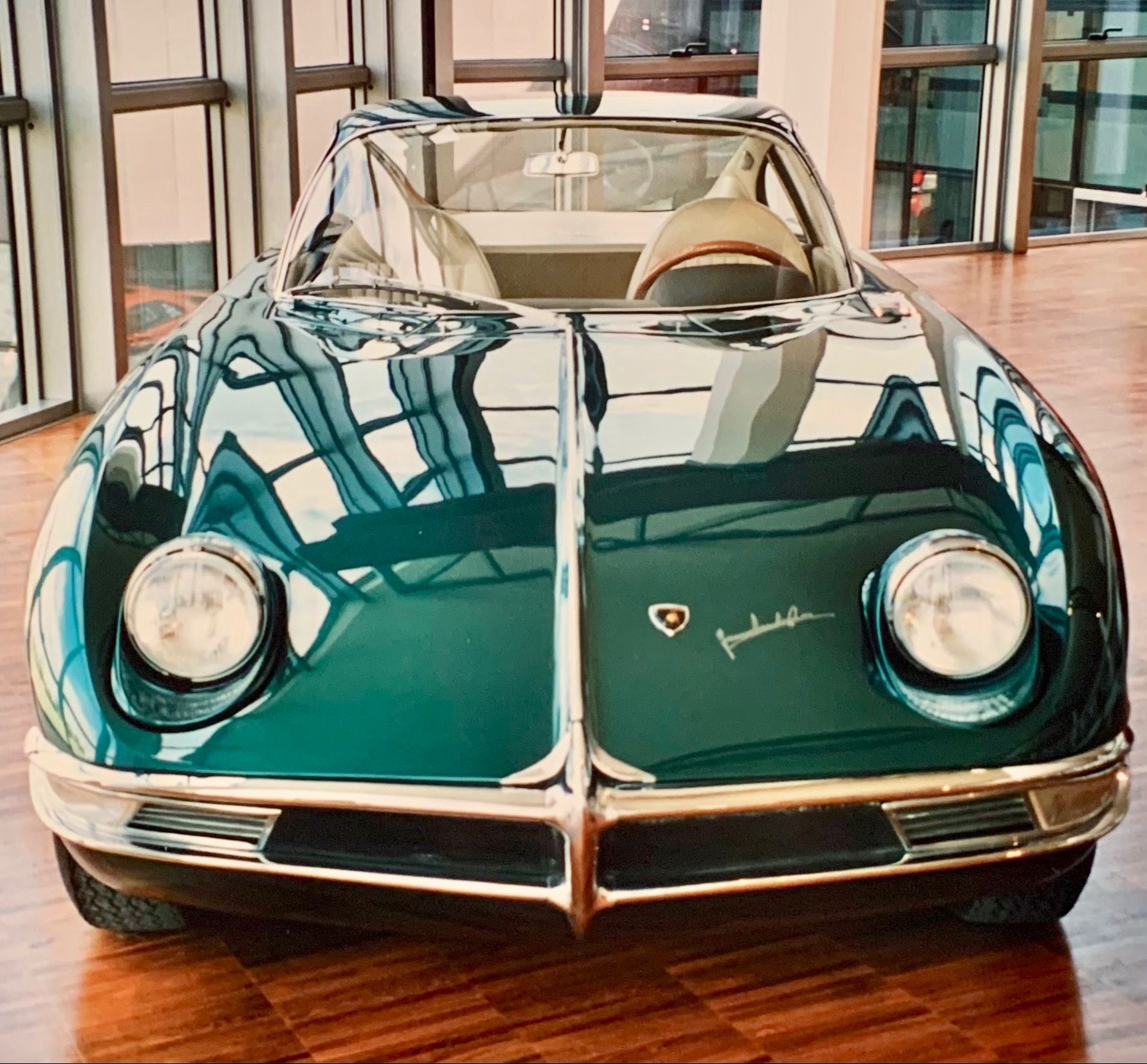
The design was penned by the brilliant Franco Scaglione, who had created the famous Alfa B.A.T. studies for Bertone. Although Scaglione was a star designer, the design of the 350 GTV received considerable criticism. Even today, it looks a little incoherent, what with its soft flowing lines abruptly ending in razor-sharp edges. The design seems unfinished. Could this be because Lamborghini had too much influence on the design? Yet the overall form is fascinating. After all, the 350 GTV’s aura fits in well with Lamborghini’s spirit of optimism at the beginning of the 1960s, and his vision of the perfect GT sports car.
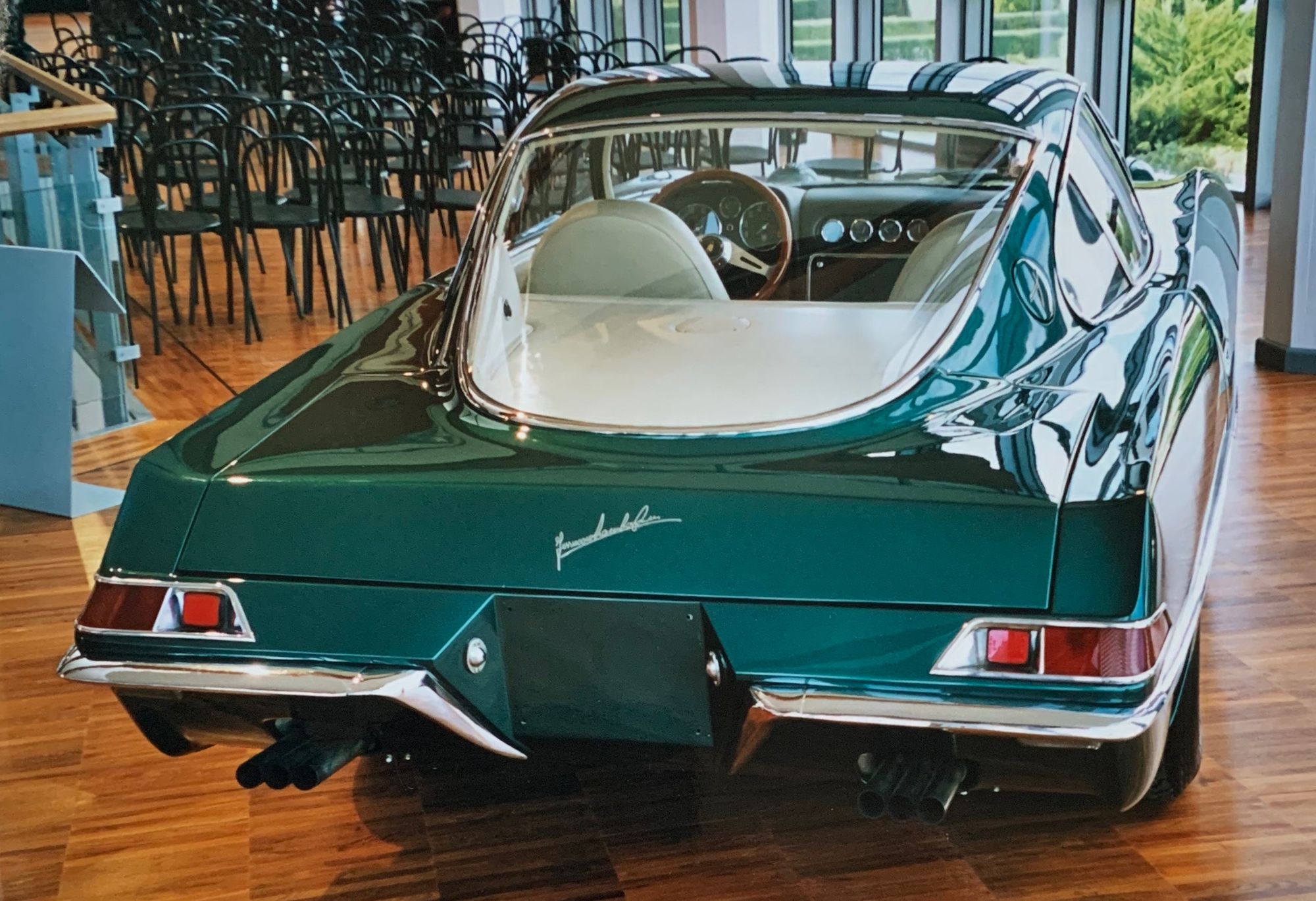
The astounding 320bhp V12 was designed by the brilliant Giotto Bizzarrini. It is hard to believe that the basic design of the 350 GTV engine served as the basis of the V12 unit all the way to the Murcielago, almost half a century!
The 350 GTV was assembled in Lamborghini’s tractor factory, as the car factory in Sant'Agata was still under construction. The first Lamborghini was unveiled at Turin in 1963, on a very small stand, which was visually enlarged by a mirror in the wall. Because the stand was so small, the few known pictures of the 350 GTV have always been taken from the same angle (diagonally in front).
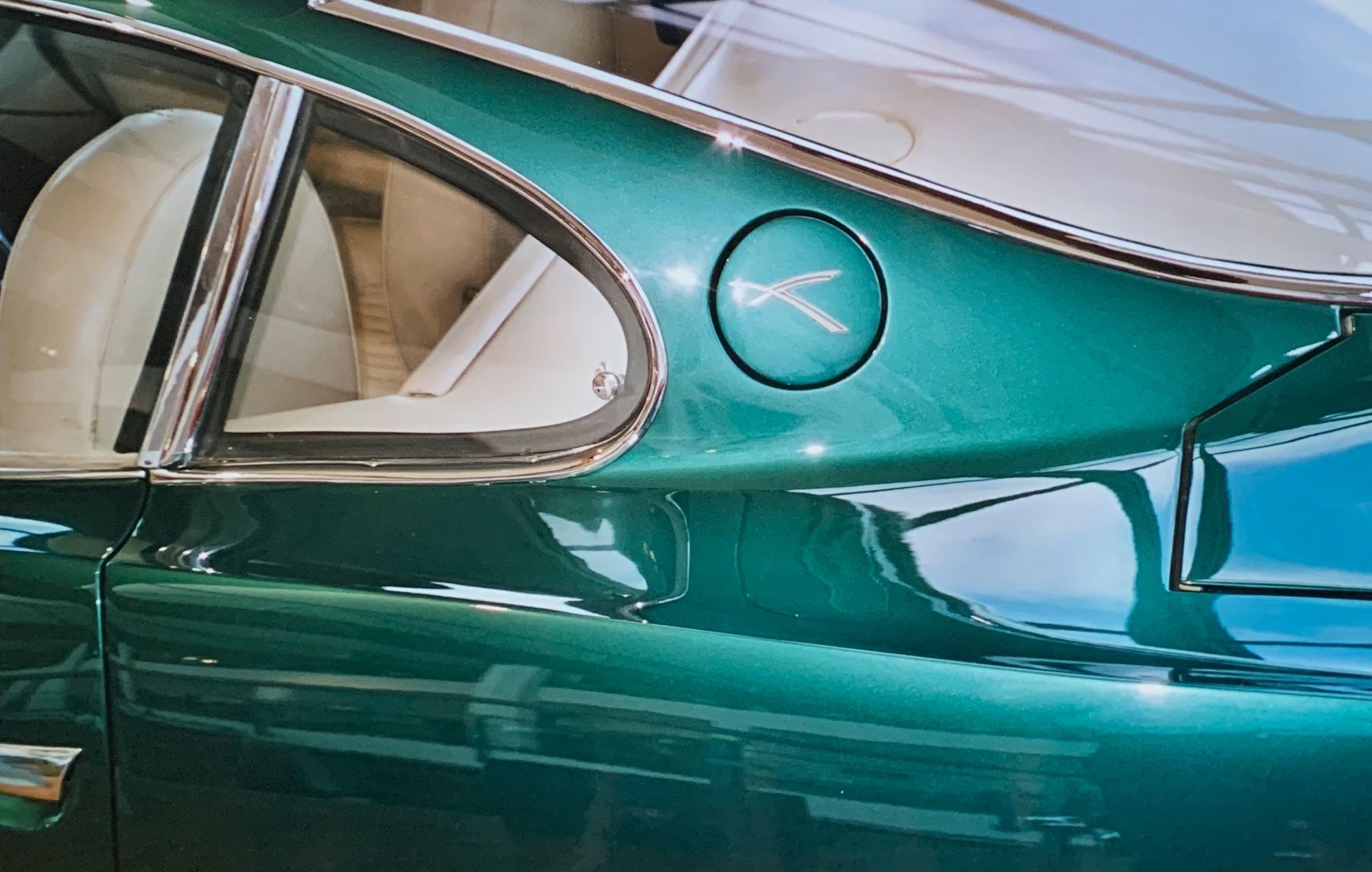
The engine under the bonnet was devoid of innards causing the front end to lift. To remedy this, bricks were put under the engine to correct the height at the front end. Which is why in all the photos from then, you see the engine next to the car, on the stand! And the bonnet is always shut...
After the Turin Motor Show, Lamborghini had the 350 GTV stylistically revised, and the task was entrusted to Carrozzeria Touring, which turned the prototype 350 GTV into the first production Lamborghini, the 350 GT.
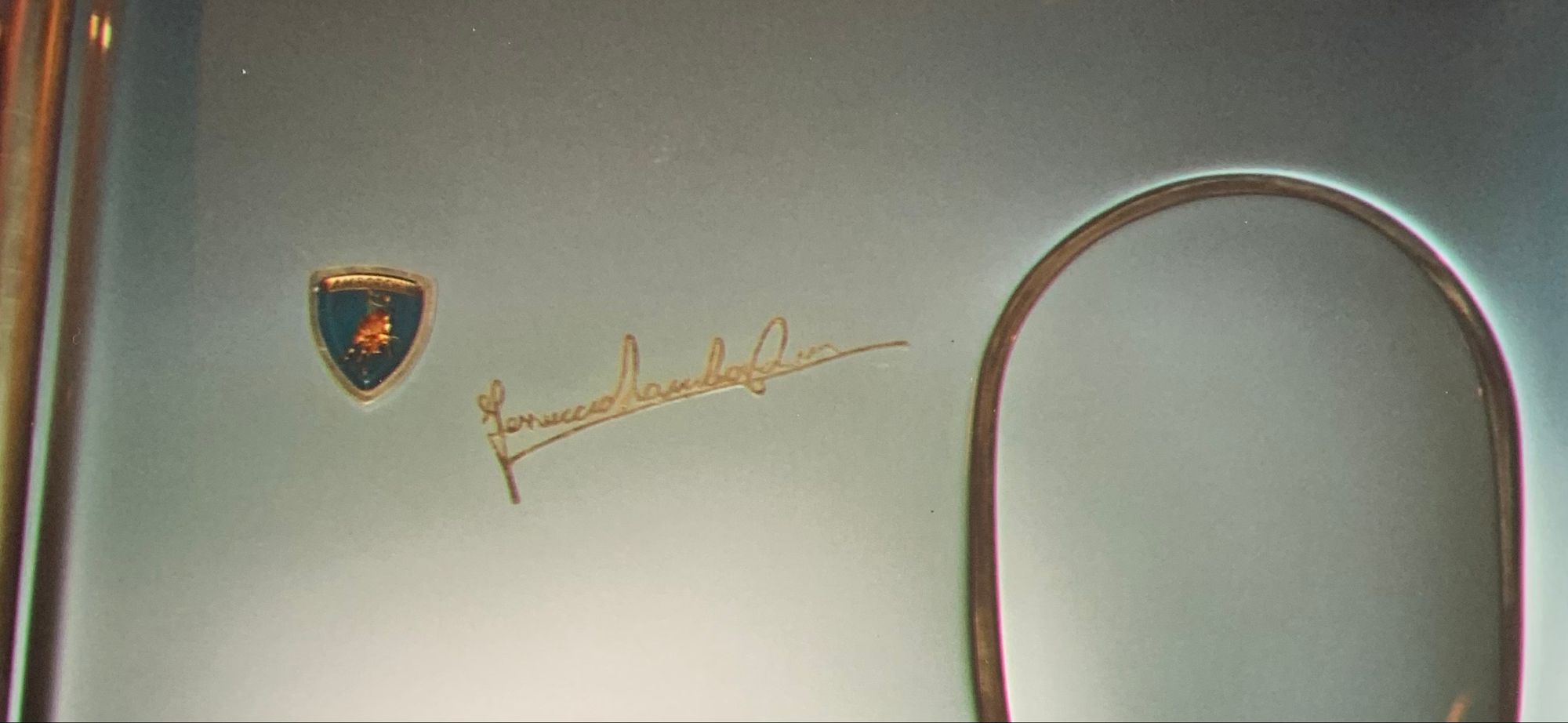
But what happened to the 350 GTV afterwards? It remained in the factory until the 1980s, parked outside, exposed to the wind and rain, and over time, fell into oblivion. Later, it was moved into a covered hall, but it continued to rot there too. Surprisingly, the complex curvature windscreen was not damaged during all these years. The engine remained in the factory too.
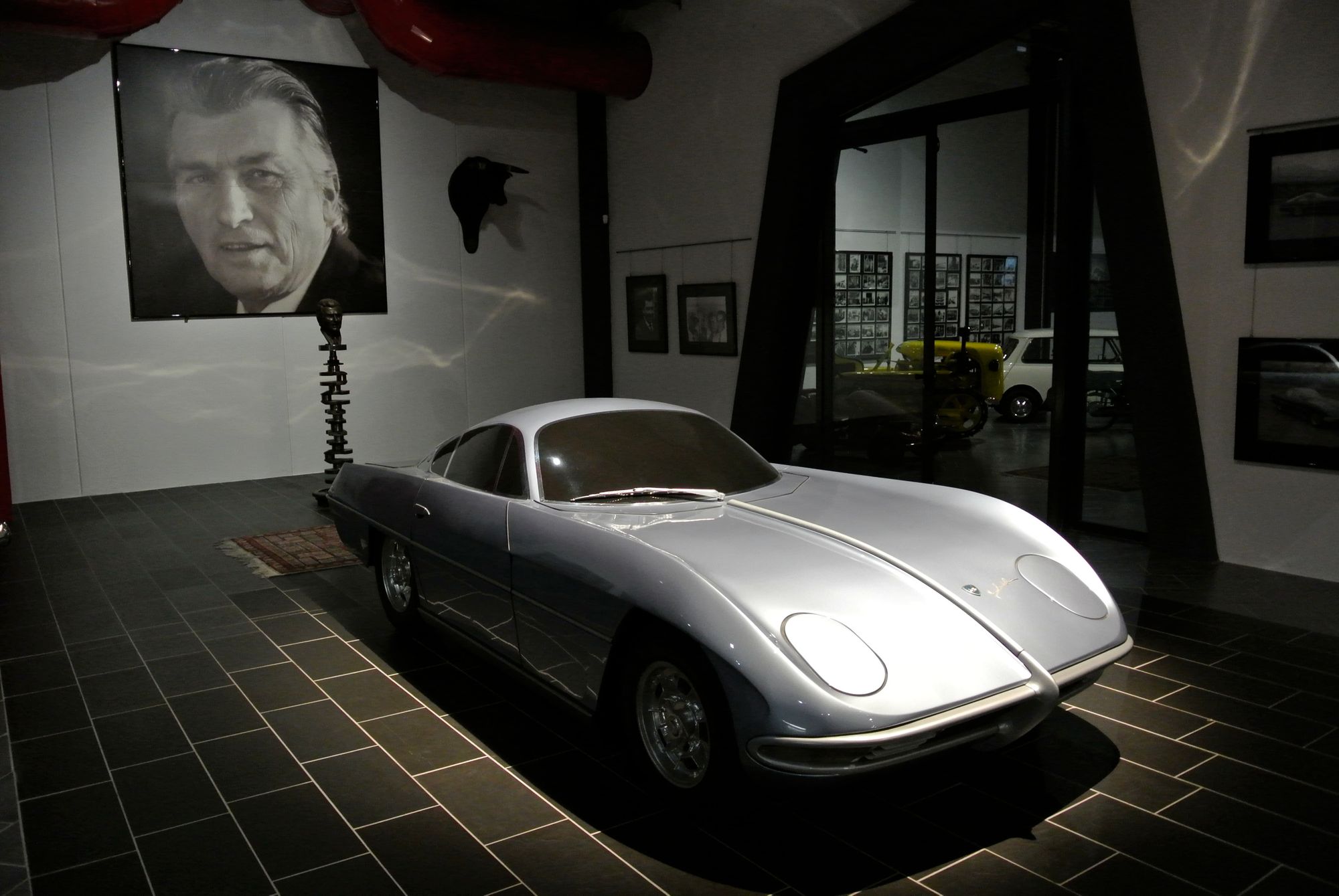
It was “rediscovered” by the well-known Lamborghini historian Stefano Pasini, who still believes that it was a miracle. The same goes for the fact that the GTV was never scrapped, despite the many crises at Lamborghini. This car simply seems to possess a special aura.
Romano Bernardoni of Emilianauto was finally allowed to buy the car from the factory in the 1990s, because the factory had no use for “a pile of rusty metal”. However, Bernardoni had to undertake the restoration of the 350 GTV, that was the deal.
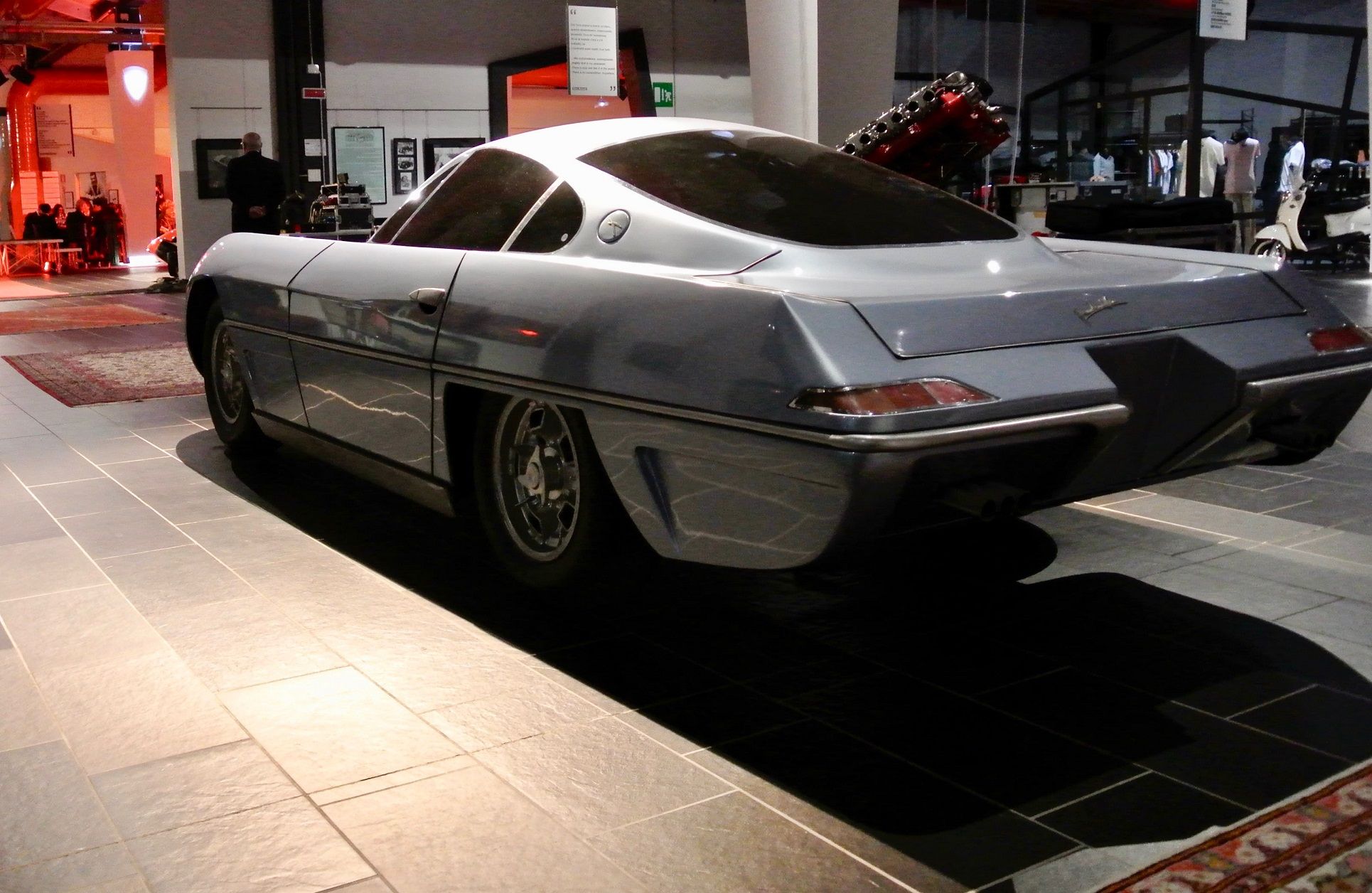
During restoration, the engine compartment had to be adapted so that the original V12 could fit under the bonnet. But what followed was a mistake that should never have happened. Bernardoni decided to have this unique vehicle sprayed in metallic green, instead of its original sky blue, with the seats upholstered in white (the original was in a deep blue).
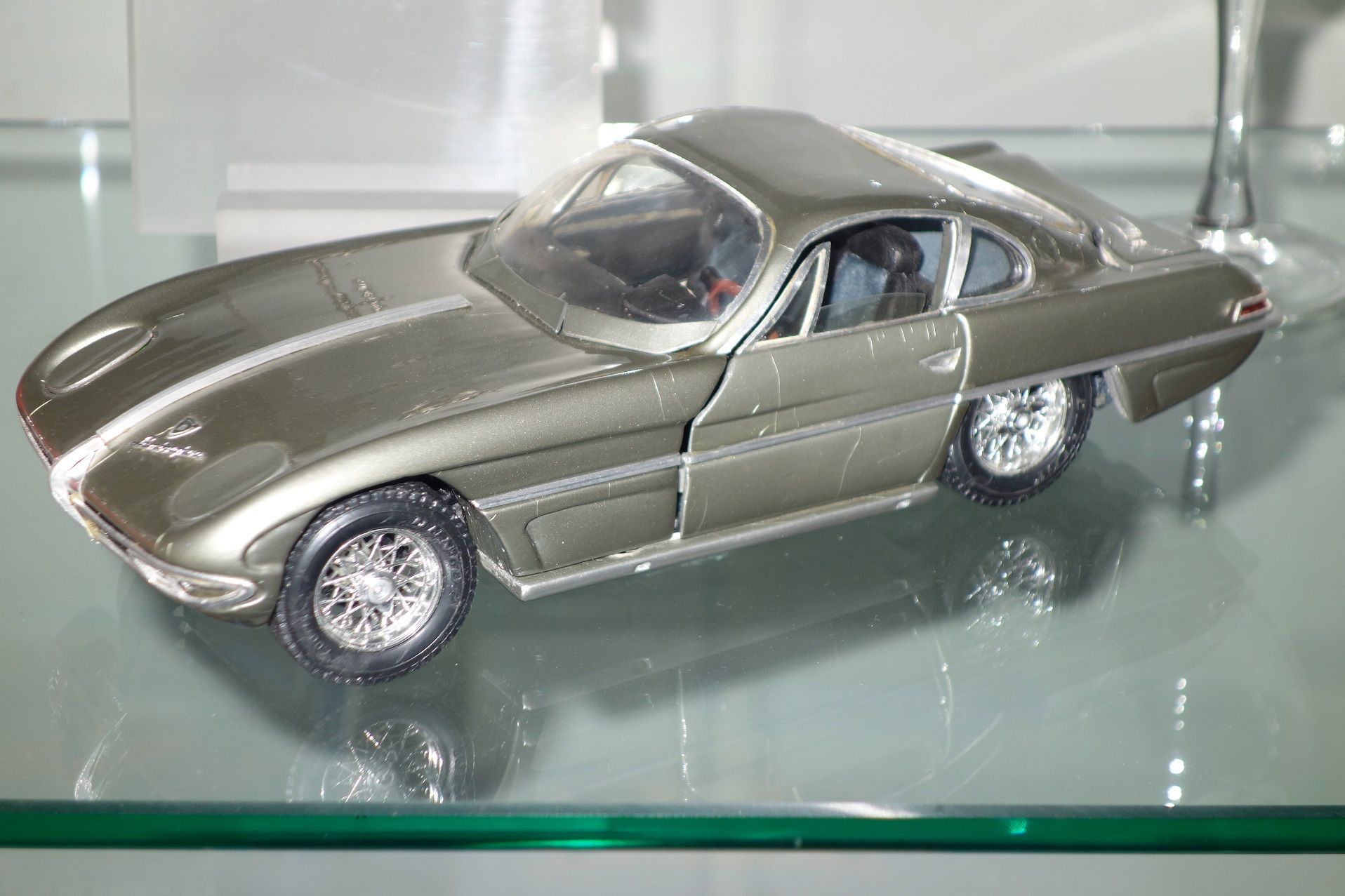
Bernardoni chose the colour green, because it was one of the possible test colours for the GTV, which was eventually not chosen for the car in 1963. Ferruccio chose the blue metallic, with dark blue leather inside. This is the colour combination in which the car is shown in period brochures. Which is why some people believe that there were two GTVs, one in metallic blue, and one in green.
There are almost no colour images of the 350 GTV from 1963. Besides, the colour often looks like grey metallic. This may be the reason why the 1:1 scale model of the 350 GTV, which is in the Ferruccio Lamborghini Museum, and which his son Tonino Lamborghini had built for the museum, is in metallic grey.

Incidentally, Bernardoni sold the 350 GTV to a Japanese collector, as Lamborghini owner Audi didn’t seem to have any interest in it at all. As of writing this, the 350 GTV is still in its historically incorrect metallic green, as it slumbers away in a famous Swiss collection. The hope remains, however, that it will eventually be restored back to the correct blue metallic.
If you want to see the original colour, check out our forthcoming book: Lamborghini At the Cutting Edge of Design!
Comments
Sign in or become a deRivaz & Ives member to join the conversation.
Just enter your email below to get a log in link.
